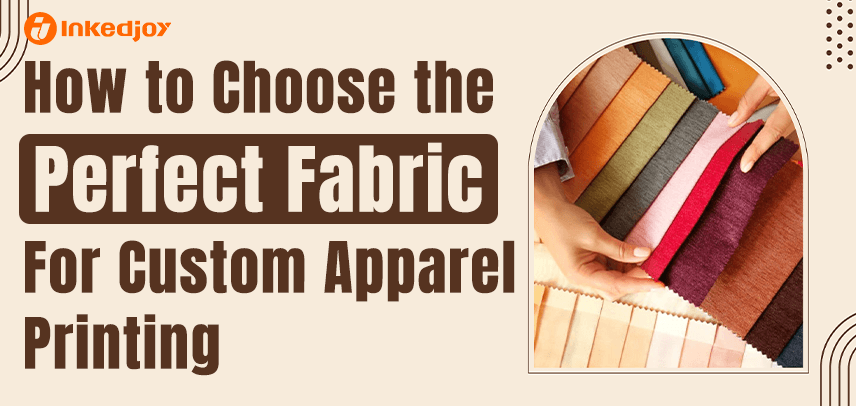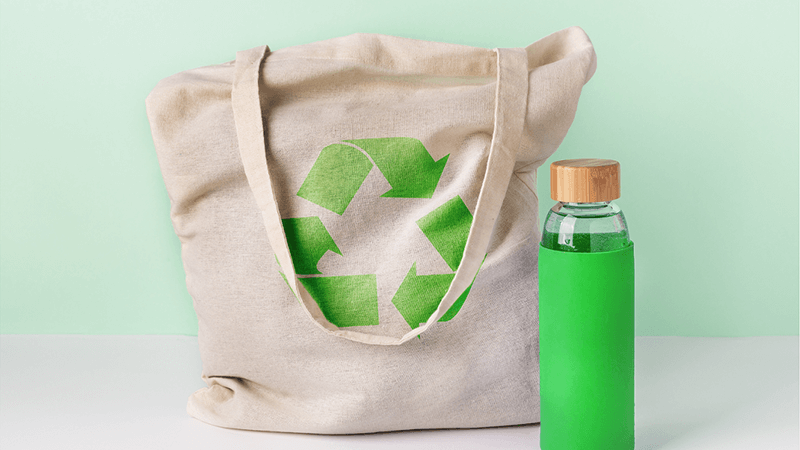
How to Choose the Perfect Fabric for Custom Apparel Printing
The foundation of any great piece of custom apparel is the fabric. This single choice influences comfort, durability, and most importantly, how your design looks. Selecting the right material is the key to creating custom clothing that not only looks fantastic but also feels wonderful and stands the test of time.
The Importance of Choosing the Right Fabric
The fabric you choose for your custom apparel plays a crucial role in how the final product performs and feels. It impacts everything from comfort to print quality and durability.
- Improved Comfort and Fit: Material selection has a significant influence on wear comfort. Softness, stretching, and breathability of the material fine-tune the wearing experience, hence increasing customer satisfaction and building brand loyalty. A wear-comfort material opens the way for a better all-round user experience, consequently increasing the appeal of the finished product.
- Assuring Highest Print Quality: The compatibility between fabric and printing method determines the final print quality. Selecting the right fabric ensures vibrant, clear, and long-lasting prints, preventing issues such as blurry or uneven prints caused by incompatible fabrics. The texture and color of the fabric also affect how well the design details appear, impacting the accuracy and visual effect of the design.
- Improving Durability and Performance: The resilience of the different materials can vary considerably, which, directly, determines the garment's lifespan. Picking the right material for the garment for the intended use can improve the wear resistance considerably, as well as the color and general usage, enabling the garment to endure the day-to-day use or the intended use. An appropriate cloth, apart from increasing the garment's visual appeal, enhances the material's usage as well.
5 Key Considerations Before You Choose Fabric for Custom
Choosing a fabric involves looking at its inherent properties, how it will be used, its compatibility with your chosen printing method and so on. A brief consideration of these factors will help you make the best choice.
Fabric Properties
Every material has unique characteristics that affect the final print, comfort, durability, and fit of your custom apparel.
Here's how fabric properties play a key role:
- Impact on Print Quality:
Texture: Smooth materials like cotton and polyester yield crisp, detailed prints. Textured fabrics such as linen give your print a softer, more artistic, or vintage feel.
Color: Light fabrics (white, pastels) act as a bright canvas, making colors pop. Dark fabrics (black, navy) require a white underlayer to be printed first, ensuring the final design is vibrant and color-accurate.
Weight: Heavier fabrics like thick fleece provide a stable surface for bold, minimalist logos. Lighter fabrics are better suited for intricate or gradient designs that can flow with the material.
- Comfort and Wearability:
Comfort and Breathability: For everyday apparel, comfort is paramount. Breathable fabrics like cotton and linen are excellent for casual wear, keeping you cool. For activewear, moisture-wicking polyester or spandex keeps the wearer dry and comfortable during physical activity.
Elasticity and Fit: Stretch fabrics with spandex or Lycra offer a snug, flexible fit, making them perfect for performance wear where movement is key. Structured fabrics like heavy cotton or wool provide a tailored look with less give, ideal for more formal or rigid garments.
Durability: High-durability materials like polyester and nylon resist wear and tear, making them ideal for workwear, uniforms, or outdoor gear that needs to withstand tough conditions. Delicate fabrics like silk feel luxurious but require more care to maintain their integrity.
Print Compatibility
The relationship between fabric and ink is critical. Some materials are ideally suited for certain printing techniques, allowing for brilliant colors. Aligning your fabric with your printing method is crucial for a professional finish.
Intended Use
How will the apparel be worn? A shirt for daily wear has different needs than a jersey for a sports team or a premium fashion item. Defining the garment's primary function will significantly narrow down your options.
Sustainability
Nowadays, most consumers seek out products made with the earth in mind. Choosing sustainable materials is a great way to get your brand in front of them. Sustainable materials like organic cotton and recycled polyester reduce the environmental footprint of your apparel and align your brand with customer values.

Your Budget
The cost of fabric varies, so it's important to find a material that aligns with your financial plan while delivering the quality you need.
- Budget-Friendly Fabrics: Cotton and basic cotton blends are affordable and versatile, making them a go-to for promotional events and large-scale production.
- Mid-Range Fabrics: Polyester blends and cotton-poly mixes offer a great balance of value and quality, combining the softness of cotton with the durability of polyester.
- High-End Fabrics: For premium projects, materials like organic cotton, wool, and advanced synthetics provide a luxurious feel and superior performance, justifying their higher cost.
If you want to try Print on Demand, InkedJoy's Sling Ankle Long Dress is the perfect choice. Crafted from a premium blend of 95% polyester and 5% spandex, it offers a lightweight, comfortable fit with just the right amount of stretch to flatter your figure.
Whether you're dressing up for work, a casual outing, or a shopping spree, this dress is a versatile must-have. Easy to care for, it's machine and hand washable—stylish and low-maintenance for any occasion.
Matching Fabrics with Printing Techniques
Various printing techniques have their forte and suit certain fabrics best. Systematically, this synergy needs to be understood for an effective realization of your design.
Screen Printing
Screen printing uses a mesh screen to push ink onto fabric in order to get bold, durable designs. It is best on cotton and cotton blends, making it effective on big orders that include bold graphics, but not as effective on designs with many colors.
Direct-to-Garment (DTG) Printing
Direct-to-Garment (DTG) printing directly applies ink to fabric, much like an office printer. It's best at producing soft, high-definition prints with detailed colors on 100% cotton apparel, but does not work on synthetic fibers such as polyester.
Sublimation Printing
Sublimation printing uses heat to infuse dye directly into polyester fibers, creating a permanent print with a soft feel that won't crack or peel.
Heat Transfer Printing
Heat transfer printing applies a design from special paper onto a garment using a heat press. This versatile method works on many fabrics like cotton and polyester and is cost-effective for small batches, but the printed layer sits on top of the fabric, which can affect comfort.
| Fabric Type | Suitable Printing Methods | Ideal Use | Characteristics | Common Applications |
|---|---|---|---|---|
| Cotton | Screen Printing, DTG, Heat Transfer | Casual wear, T-shirts | Soft, breathable, absorbs ink well | T-shirts, sweatshirts, casual wear |
| Polyester | Sublimation, Heat Transfer | Sportswear, Outdoor gear | Durable, moisture-wicking, quick-drying | Sports jerseys, jackets, bags |
| Cotton-Poly Blend | Screen Printing, Heat Transfer, DTG | Activewear, Workwear | Combines cotton softness with polyester durability | Custom T-shirts, polo shirts, uniforms |
| Linen | Screen Printing, DTG | Summer wear, Lightweight outerwear | Breathable, lightweight, natural texture | Summer shirts, dresses, beachwear |
| Spandex / Lycra | Heat Transfer, Screen Printing (Limited) | Activewear, Sportswear | High elasticity, form-fitting, flexible | Yoga pants, performance wear |
| Wool | Screen Printing (Limited) | High-end fashion, Cold-weather wear | Warm, luxurious, can be heavier | Sweaters, coats, luxury fashion |
Making a Confident and Informed Fabric Decision
Selecting the appropriate fabric is selecting the lifeblood of your creativity. It is not merely a component of the apparel; it is the vessel holding the soul of your design. Each fabric that goes into an article of clothing is a bridge that harmoniously connects design with existence, creating a tangible experience of your concept for each wearer. Selecting the proper fabric is like clearing the path to prosperity for your design and creativity. It is crafting your own custom-made identity.



